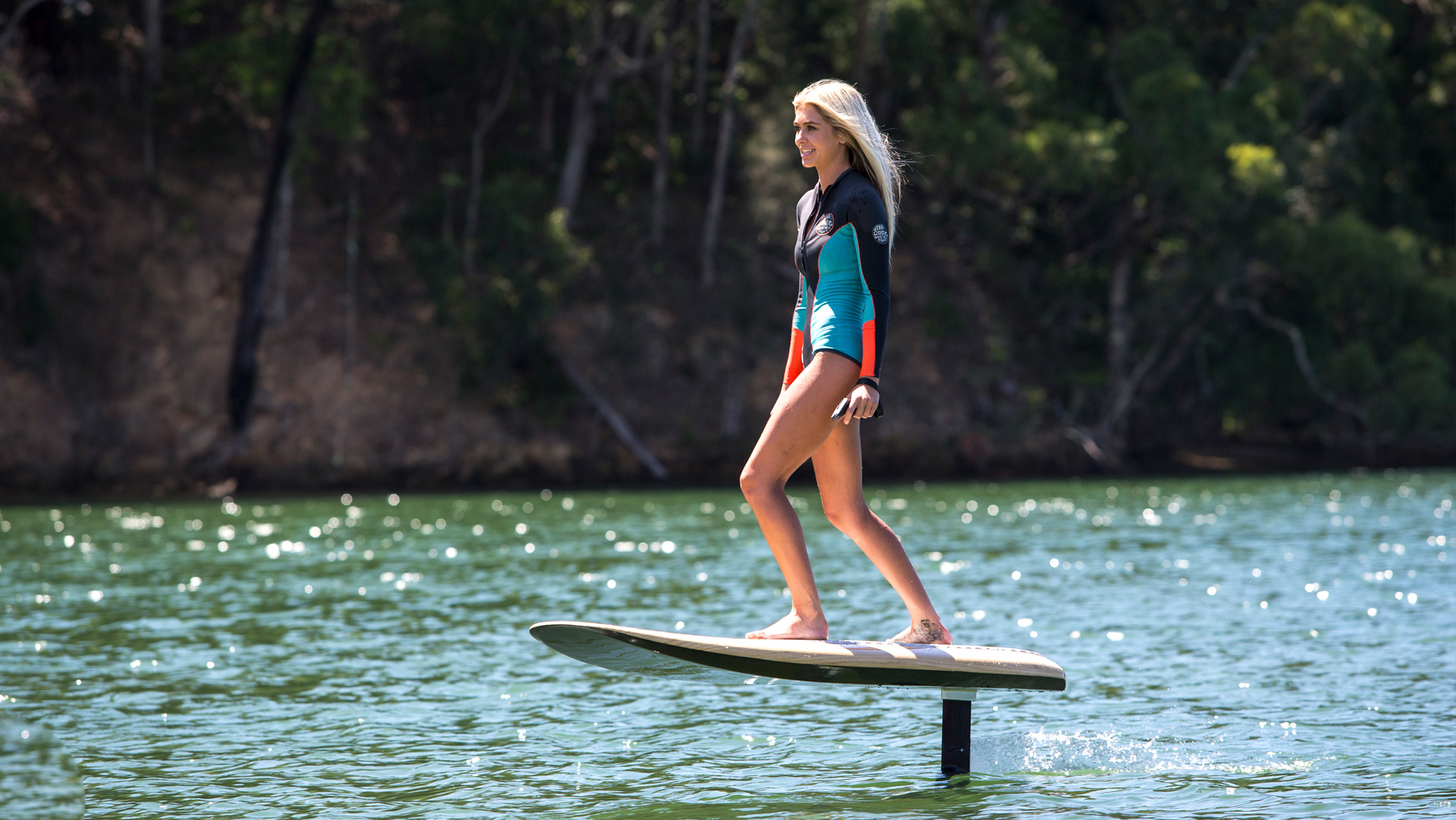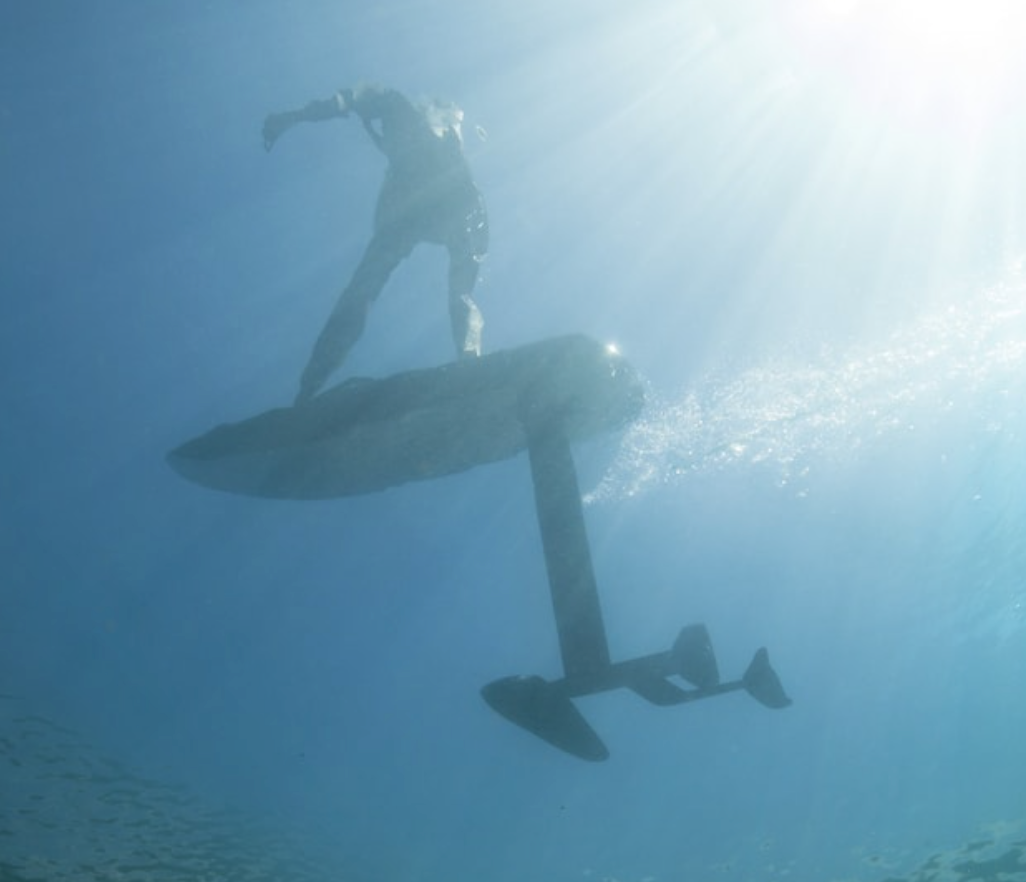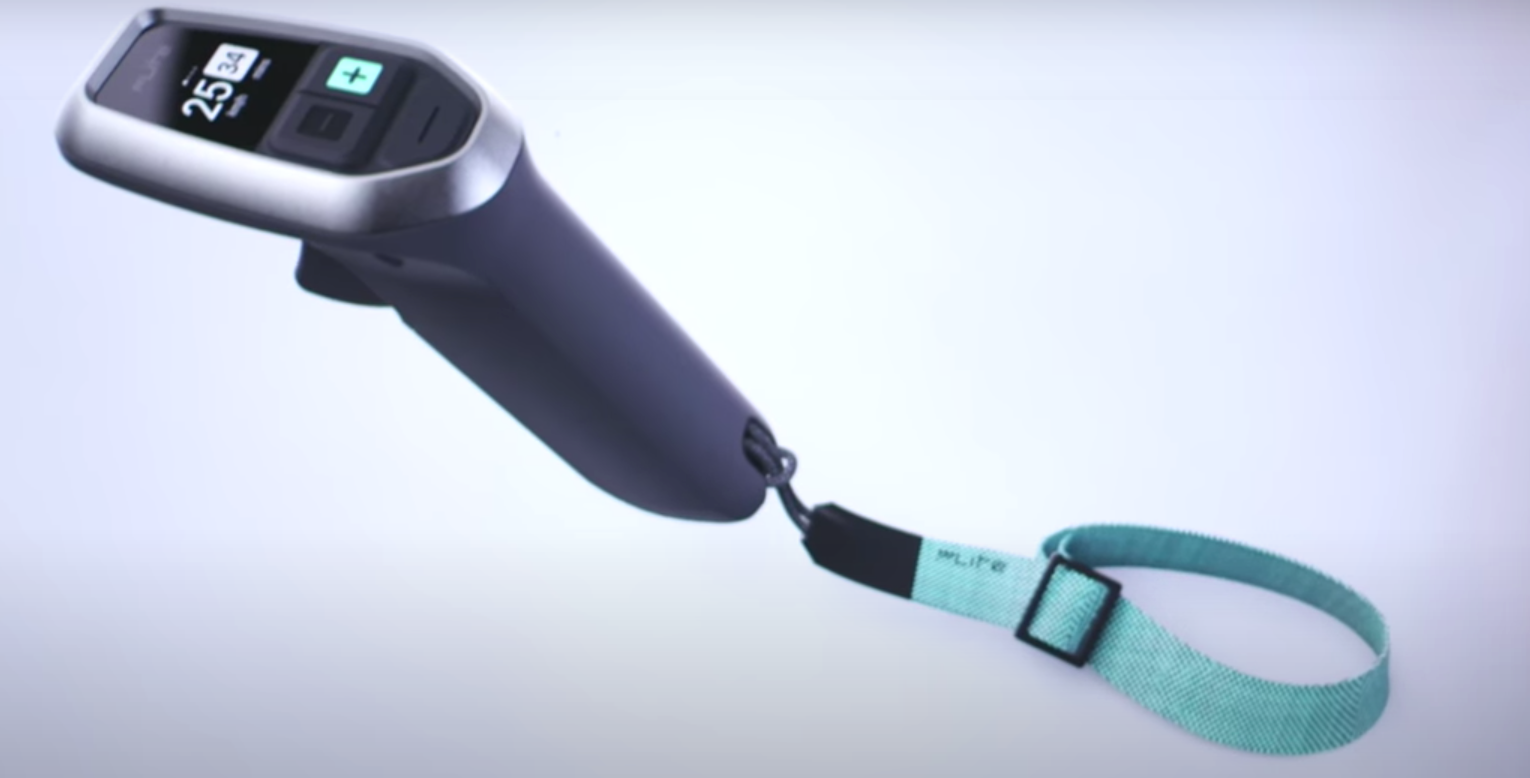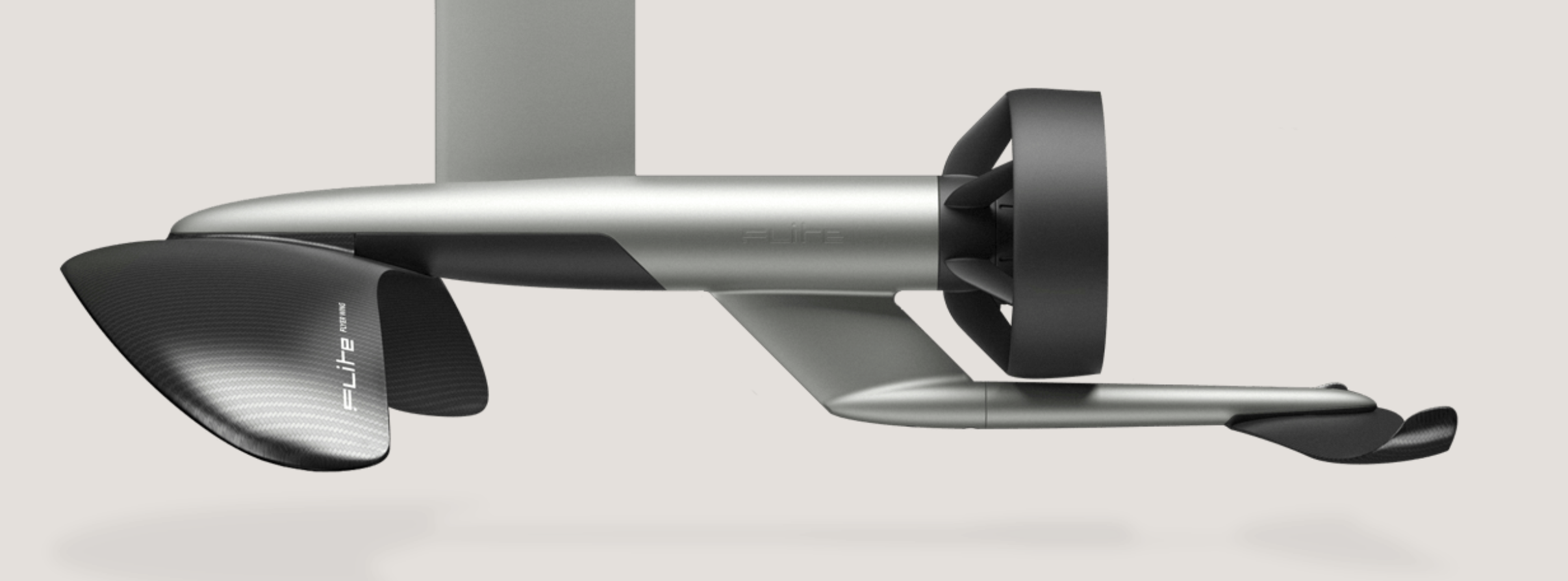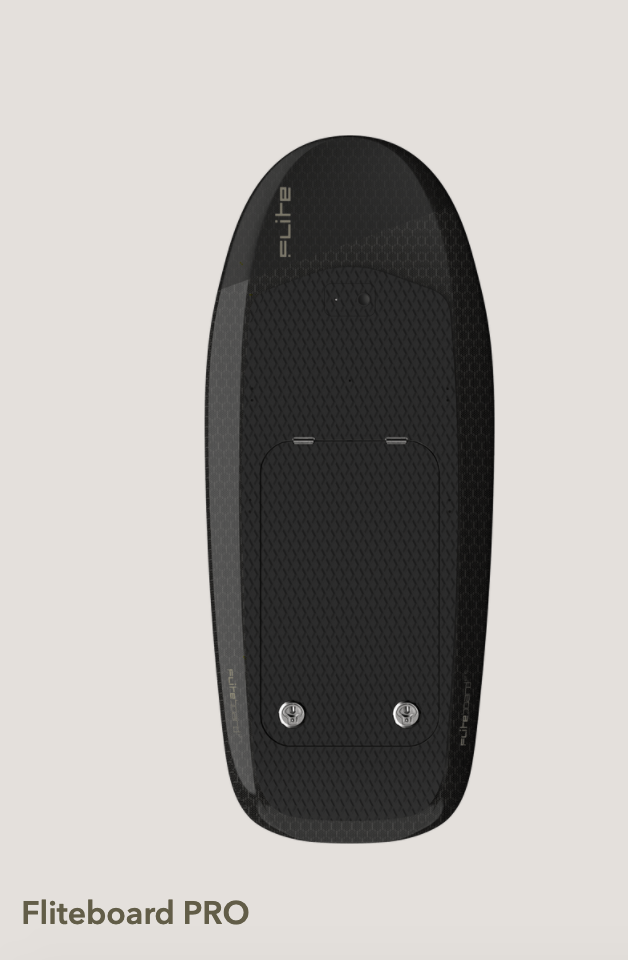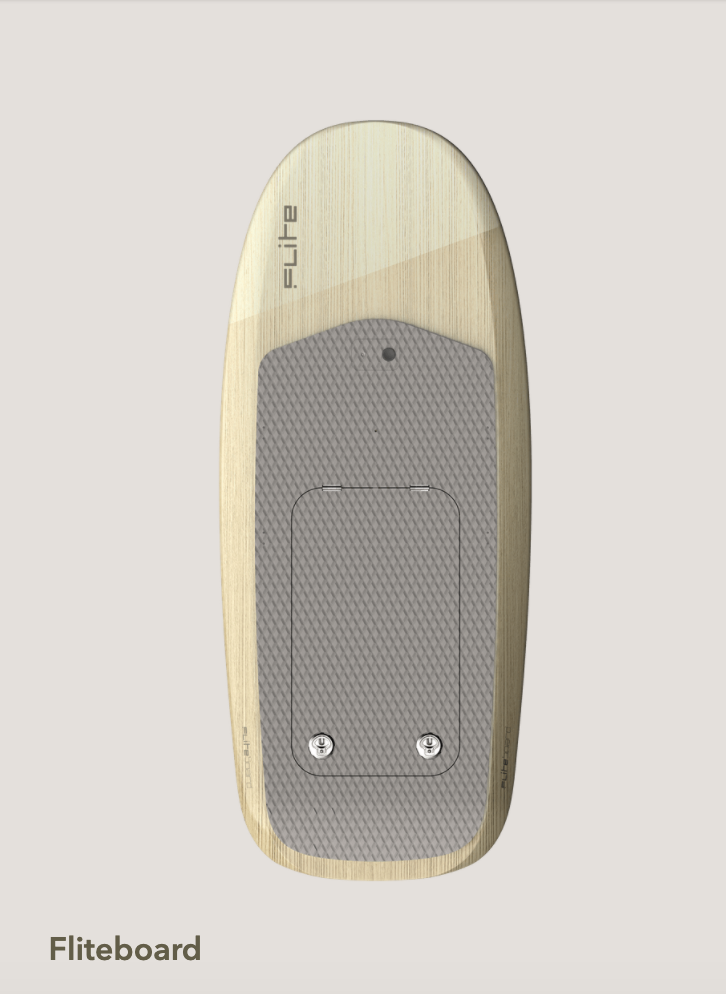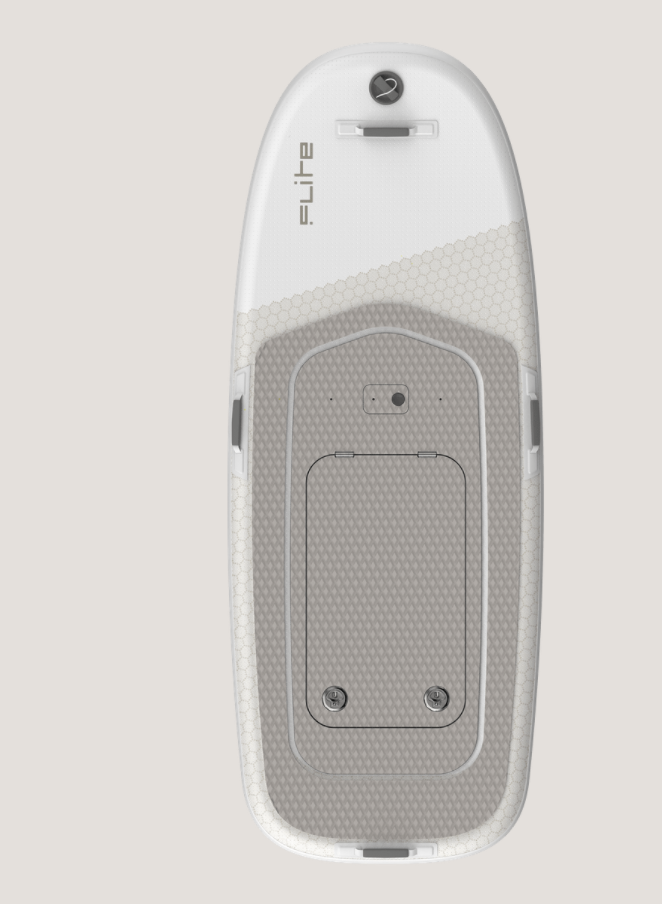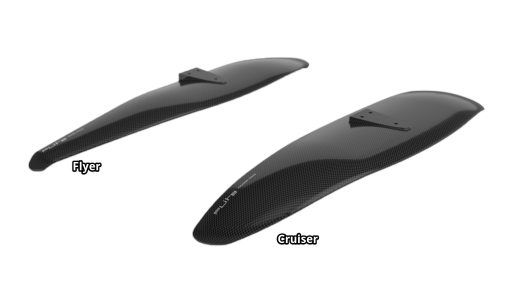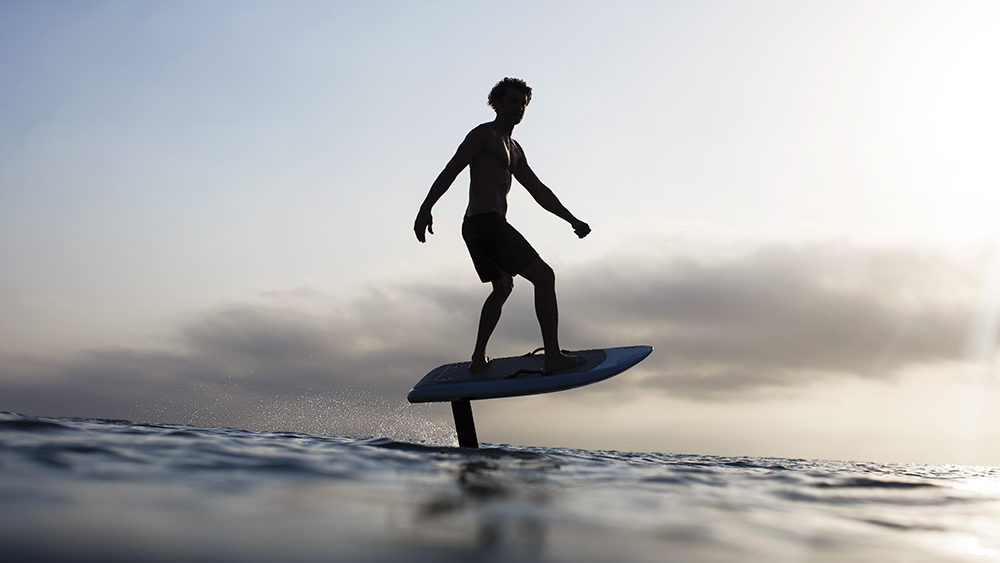Fliteboard
The Fliteboard eFoil is an electrically-powered surfboard attached to a foil beneath the surface. It’s designed to give the sensation of flying over the water.
For more information, click here.
Brief Summary
The Fliteboard eFoil is an electrically-powered surfboard attached to a foil beneath the surface. It’s designed to give the sensation of flying over the water. Powered by an electric motor, it can carve turns like a snowboard or even a wakeboard, but it doesn’t need snow or a tow boat. It can be ridden anywhere and produces zero emissions.
Features Discussion
Fliteboard is battery powered and can run for 90 minutes on a charge. It can reach speeds up to 28 mph and has a range of 18 statute miles. The rider stands on the board, which remains above the water’s surface. It links to the foil and electric motor, which are a couple feet below the surface similar to the foils used on America’s Cup yachts. The board raises and lowers as the rider adjusts his/her position by moving fore and aft or leaning into turns.
Control in Hand
If it has a motor, there has to be a way to control it and the board comes with the Flite Controller, a handheld waterproof (IP67) remote that provides real time performance information. It has GPS and Bluetooth and the display includes speed, distance, battery time, range and efficiency. When it needs to be charged, there’s no need to plug it in. It connects to the charging base magnetically.
The Flite Controller communicates with the Flitebox, which houses the brushless electrical motor in a hard-anodized aluminum shell that has finned heatsink for optimized cooling, which eliminates the need for water-cooling tubes. Inside the housing is a computer that coordinates data from multiple sources. The motor puts the power to the water via a Newton-Rader propeller that’s engineered to accommodate a variety of rider weights, foil wings and speeds.
Board Meeting
Riders can choose among three different boards. The Fliteboard and Fliteboard PRO are built with PVC carbon sandwich technology and come in a range of finishes. The Fliteboard AIR has a rigid center section and an inflatable collar similar to a rigid hull inflatable.
The Fliteboard PRO is the smallest of the three at 5’0” x 24.5” (1.27 m x .62 m). It displaces 18 gallons (68.14 liters) and is designed for more aggressive riders who want to shred turns.
The Fliteboard measures 5’8” x 28” (1.72 m x .71 m) and displaces 26.4 gallons (99.94 liters). It’s intended for more all-around use and would be good for beginners.
The Fliteboard AIR is 6’6” x 30” (1.98 m x .76 m) with the shell and has a displacement rating of 42 gallons (158.99 liters). The company says this model would be good for rental operations.
Wings Beneath the Water
Users can choose between two wings for the foil that is always below the surface. The Flyer wing is for going fast and providing maximum efficiency for lighter riders. It’s also more responsive.
The Cruiser wing is designed for slower to medium speeds and heavier riders. It makes tight turns at slower speeds and is the best option for riding in waves.
Power Sources
There are two battery choices for the Fliteboard. The Flitecell Sport is rated for 30 amp-hours/1.65 KWh and it weighs 19.29 lbs. (8.75 kg). The Flitecell Explore is an upgrade with specifications of 40 amp-hours/2.1 KWh and it tips the scales at 30.64 lbs. (13.9 kg). Each battery pack has a housing made of CNC machined aluminum and high-temperature polymers for good heat management. Internal cells are high-density Lithium Ion with 100 percent nickel terminations and two-stage fusing.
Pricing
Retail pricing starts at $12,935.
Observations
The Fliteboard could be a good addition to the toybox on a yacht, especially a charter. It could also have potential for rentals at an upscale resort. It’s not inexpensive and it’s for a solo rider only, but much like snowboarding or surfing, the growth curve seems limitless and riders can continue to expand their bag of tricks.
From that perspective it seems like something that a rider won’t outgrow it soon after purchasing it. Additionally, as with most electrically-powered craft, it’s likely that the battery technology will continue to improve. That means a potential for longer range and use times.
